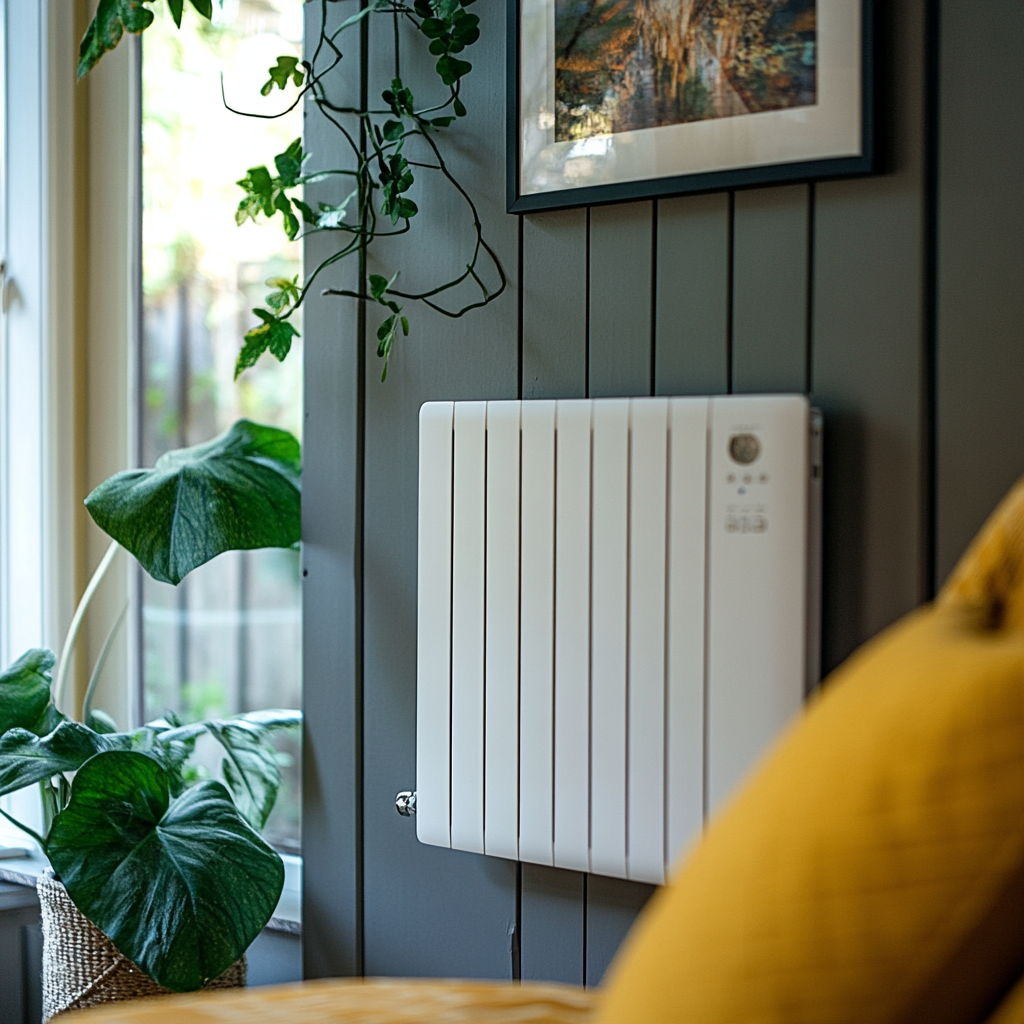How to Calculate the Energy Needed to Heat or Cool Your Garden Room: A Quick Guide
How to Heat and Cool Your Garden Room Efficiently: A Practical Guide
When building a garden room, one of the key factors in ensuring comfort throughout the year is managing its temperature efficiently. Whether you want to keep it warm during chilly winters or cool in the summer heat, understanding how much energy is required can help you plan for both comfort and cost. In this blog post, we’ll explain how to calculate the energy needed to maintain your garden room’s temperature, using straightforward examples for winter heating and summer cooling.
We’ll also cover how modern technology and intelligent systems can make managing your garden room’s temperature even more efficient.
Winter Heating Scenario: How Much Energy Will You Use to Maintain 20°C?
Maintaining a consistent temperature in your garden room can be more energy-efficient than constantly heating it from a colder starting point. By keeping the room at a stable 20°C all day, you reduce the fluctuations in temperature and avoid extra energy needed for re-heating.
Example: Average Winter Temperature of 4°C Outside
Let’s assume the average winter temperature outside is 4°C, which is common in the UK, and you want to keep the room at a comfortable 20°C inside. The temperature difference between inside and outside is 16°C.
Let’s calculate how much energy is needed to keep the room at 20°C, even when it’s not in use after 4 PM. This is calculated based on constant heating, which is often more energy-efficient than letting the room cool down and trying to heat it back up.
Garden Room Heating & Cooling Cost Calculator
Step 1: Calculate Heat Loss Through the Walls
First, we need to know how much heat the room is losing due to its insulation. The U-value of the walls, windows, and roof will help us understand this.
For your garden room, the U-value for the walls is 0.254 W/m²·K, and the total wall area is 30 m². The temperature difference is 16°C.
Heat Loss (W) = U-value × Area (m²) × Temperature Difference (°C)
For the walls:
Heat Loss = 0.254 × 30 × 16 = 121.92 Watts
This means that your walls are losing 121.92 Watts of heat for every square meter of surface area for each degree of temperature difference.
Step 2: Calculate Total Energy Consumption for 24 Hours
Now, let’s calculate the energy required to maintain 20°C in the garden room over a full 24-hour period.
The formula for energy consumption is:
Energy (kWh) = Heat Loss (W) × Hours ÷ 1000
For 24 hours of heating:
Energy = 121.92 W × 24 hours ÷ 1000 = 2.93 kWh
So, to keep your garden room at 20°C all day and night, it would require about 2.93 kWh of energy every 24 hours.
Step 3: Energy Costs
To calculate the cost of this energy usage, you multiply the energy consumption (in kWh) by your energy rate. For example, if your energy cost is £0.20 per kWh:
Cost per day = 2.93 kWh × £0.20 = £0.59 per day
This means it would cost about 59p per day to maintain a constant 20°C temperature inside your garden room, assuming a 24-hour period of heating.
Summer Cooling Scenario: How Much Energy Will You Use?
In summer, it’s important to keep your garden room cool to prevent heat buildup. The same principles apply when calculating the energy required to maintain a comfortable temperature. This time, we focus on heat gain through the walls, windows, and roof, and how much energy is required to counteract that gain.
Example: Hot Summer Day with 35°C Outside
Let’s say it’s a hot summer day, and the outdoor temperature is 35°C, with the goal of maintaining 22°C inside the garden room. The temperature difference between inside and outside is 13°C.
Step 1: Calculate Heat Gain Through the Walls
Using the U-value of 0.254 W/m²·K for your walls, and a wall area of 30 m², we calculate the heat gain:
Heat Gain (W) = U-value × Area (m²) × Temperature Difference (°C)
Heat Gain = 0.254 × 30 × 13 = 99.42 Watts
This means your walls are gaining 99.42 Watts of heat for every square meter of surface area for each degree of temperature difference.
Step 2: Calculate Total Energy Consumption for 8 Hours
If you want to maintain that cool 22°C temperature inside for 8 hours, the energy required is:
Energy (kWh) = Heat Gain (W) × Hours ÷ 1000
Energy = 99.42 W × 8 hours ÷ 1000 = 0.80 kWh
This means you’ll need about 0.80 kWh of energy to keep your garden room cool for 8 hours on a hot summer day.
How Technology Can Help: Intelligent Heating and Cooling Systems
While these calculations give a good estimate of the energy needed to maintain temperature, modern technology makes managing the temperature of your garden room even more efficient. Today, you can use smart thermostats, sensors, and intelligent timers to optimize the energy usage.
For example, you can set your garden room’s temperature to 17°C during times when it’s not in use. Then, the intelligent system can automatically start heating up the room before you arrive, ensuring it reaches a comfortable 20°C by the time you need it at 8 AM. These systems can also adapt to your daily schedule, minimizing energy use while maintaining comfort.
Final Thoughts: Energy Efficiency and Comfort
While these calculations are based on typical values, they don’t account for all variables like drafts, heat from appliances, or fluctuating outdoor temperatures. However, they give you a solid foundation for estimating energy consumption. The key takeaway is that keeping a constant temperature is often more energy-efficient than allowing the room to cool down and then re-heating it later.
Using smart technology and intelligent heating/cooling systems is another great way to ensure your garden room stays comfortable without wasting energy. This approach allows you to manage energy use effectively and enjoy your space year-round.




